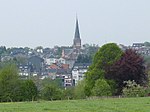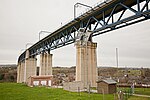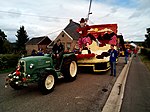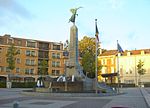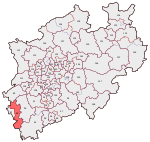Lontzen
Liège geography stubsLontzenPages with German IPA

Lontzen (German pronunciation: [ˈlɔntsn̩]) is a municipality located in East Belgium. On January 1, 2018 Lontzen had a total population of 5,695. The total area is 28.73 km² which gives a population density of 198 inhabitants per km². The municipality consists of the following sub-municipalities: Lontzen proper, Herbesthal, and Walhorn. In the 19th century, a Low Franconian dialect was widely spoken in Lontzen.
Excerpt from the Wikipedia article Lontzen (License: CC BY-SA 3.0, Authors, Images).Lontzen
Mühlenweg,
Geographical coordinates (GPS) Address Nearby Places Show on map
Geographical coordinates (GPS)
| Latitude | Longitude |
|---|---|
| N 50.683333333333 ° | E 6 ° |
Address
Lontzener Mühle
Mühlenweg
4710
Liège, Belgium
Open on Google Maps
